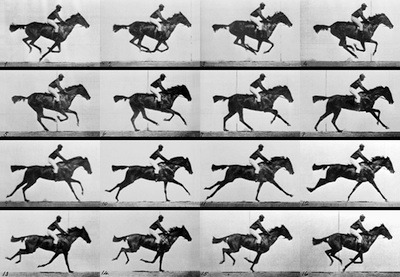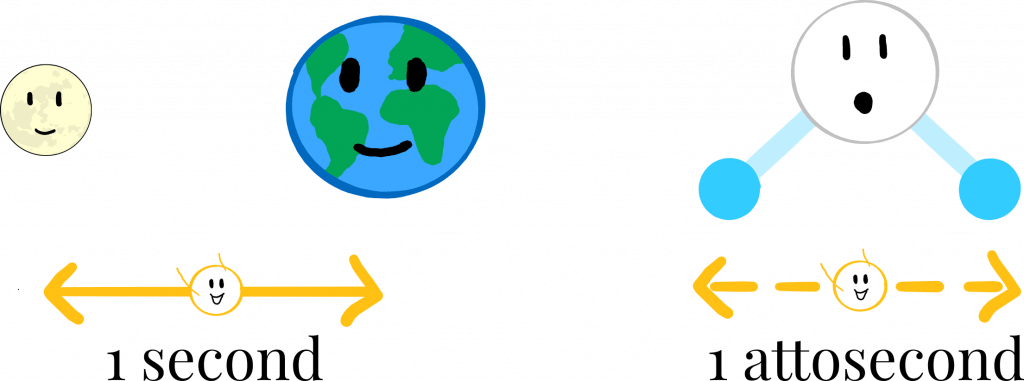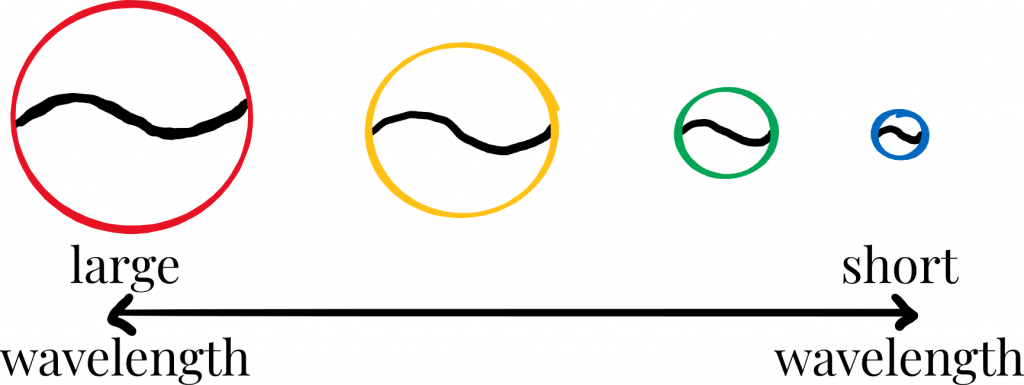As I do every year, I followed the Nobel Prize ceremony with great interest! You’ve probably already had time to take a look at the prize winners and their topics. Nevertheless, I would like to give you an overview of what it was all about, why it is important and what was so special about this year’s prizes. We will also take a look at a prize that is almost even more beautiful than its role model: the Ig Nobel Prize in Physics.
The Ig Nobel Prize in Physics: Peace and sexy anchovies
Let’s start chronologically, with the Ig-Nobel Prize for Physics, which is traditionally awarded a few weeks before the Nobel Prize. The English “ignobel” means “dishonourable” and the Ig-Nobel Prize is the satirical version of the time-honoured Nobel Prize. It is awarded for research that first makes you laugh and then makes you think. However, this is by no means about jokes or dishonest research, but about genuine, clean research that merely seems bizarre or funny. It is awarded in ten different categories every year. However, physics is almost always included.
I look forward to the Ig-Nobel Prizes every year because they demonstrate more beautifully than almost anything else that research can also be fun. In recent years, for example, the prize has been awarded for research into the swimming formation of ducklings, the cube-shaped faeces of wombats and the states of matter of cats.
At the same time, however, the prize is often socially critical. My personal favourite: The very first Ig-Nobel Peace Prize was awarded in 1991 to the physicist Edward Teller – who I’m sure many people know from the film Oppenheimer. He is the father of the hydrogen bomb and the first proponent of the Star Wars weapon system, and received the prize “for his lifelong commitment to changing the meaning of the word peace”.
The 2023 Ig Nobel Prize in Physics
This year, the Ig-Nobel Prize in Physics went to a Spanish-Swiss-French-English team of researchers – Bieito Fernández Castro, Marian Peña, Enrique Nogueira, Miguel Gilcoto, Esperanza Broullón, Antonio Comesaña, Damien Bouffard, Alberto C. Naveira Garabato and Beatriz Mouriño-Carballido. They measured the change in the composition of seawater depending on the sexual activity of anchovies. Yes, anchovies are also sexually active and they change the sea!
“This is the sexiest research of my entire life,” says lead researcher Mouriño-Carballido. The researcher was originally looking for clues as to how environmental conditions influence the growth of microscopic algae. At night, she observed strong turbulence and mixing of the water. A measurement showed that fish activity was responsible for this. They later discovered that the measurement data corresponded to the sexual activity of anchovies. They found eggs in nets that confirmed their hypothesis.
The research team was therefore able to show that it is not only wind or the tides that enable effective mixing of the seawater, but also the activity of fish, in this case, the love play of anchovies.
The 2023 Nobel Prize in Physics
A few weeks later, on the third of October, the “real” Nobel Prize for Physics was awarded. There was a huge uproar because a researcher from Germany was among the winners! The Hungarian-Austrian physicist Ferenc Krausz from the Max Planck Institute of Quantum Optics in Garching – where I had already been! – received a third of the prize.
What made me even happier was that another third went to the Frenchwoman Anne L’Huillier – the fifth woman to be honoured with a Nobel Prize in Physics! She conducts research at Lund University in Sweden and received the call during a lecture. She went out briefly to receive the good news and then returned to finish her lecture. That is true dedication to teaching!
The third prizewinner, Pierre Agostini, is French and conducts research in the USA. What does that tell us? None of the three has found a job in their home country. It’s a question of perspective, but in my opinion, this is one of the biggest shortcomings of science. You can’t plan your career, you have to take a job where you get it, and whether you like it there is a matter of luck. Some people dream of this freedom, others prefer to settle down. The latter have, well, bad luck in science.
Molecular short films
After so much preamble, what was this year’s Nobel Prize all about? The prizewinners have succeeded in visualising the movement of electrons in the shells of atoms and molecules! The best way to understand this is to compare it to normal photography. To record a video, numerous images are taken a short distance apart. If these are played back fast enough, it looks as if the image is moving.
The important thing is that the camera shutter clicks faster than the object being filmed moves. For example, if I rock back and forth in one second, it looks like I’m standing still in a film for which a photo was taken every second. To resolve this rocking motion, I have to take photos faster than I move.

Electrons whizzing around in the shells of atoms and molecules move much faster than I do: namely on a timescale of attoseconds! An attosecond is an extremely short period of time. A trillion attoseconds fit into one second – the same number of seconds that have passed since the beginning of the universe. In one second, light travels the distance between the moon and the earth, in one attosecond the length of a water molecule.

This year’s prizewinners were able to produce laser pulses that are only a few attoseconds long in order to resolve the movement of electrons. L’Huillier found a new method of combining many waves in such a way that these very short pulses can be generated. Agostini then succeeded in producing a sequence of these short pulses, each of which was only 250 attoseconds long. Krausz was able to generate an isolated pulse with a length of 650 attoseconds.

This technology is important for analysing molecules and tracking the movement of their electrons in real-time – for example, to investigate diseases. By recording the “molecular fingerprint”, i.e. the specific electron movement in the molecule, changes in blood samples could be detected. This would create a new field, “atto-chemistry”, in which the behaviour of electrons in a molecule could be investigated. L’Huillier’s dream is not only to use the method to observe molecular reactions but also to control them.
You can read more about the Nobel Prize for Physics – without a paywall – on Tagesspiegel.de (German).
The Nobel Prize for Chemistry
What was special about this Nobel Prize in Chemistry was that it was leaked hours before the official announcement! Already in the morning, Swedish media spread the word about whom the prize would go to – although it was not officially decided until a meeting an hour later who would actually receive the prize! Whoops!
When it was announced, it turned out to be as predicted. Fortunately for me. Chemistry is a difficult Nobel Prize to plan every year when it comes to deciding who in the science editorial team should summarise the prize and write a text at lightning speed. Will it be medicine, physics or hardcore chemistry? Last year it was one, this year the other: Quantum dots, definitely physics. The three researchers Moungi Bawendi from the Massachusetts Institute of Technology (MIT), Alexei Ekimov from the Soviet Union and the US American Louis Brus received the prize for their discovery that the world behaves completely differently on the smallest scales.
Loyal Physicus Minimus readers have long known this, of course, because quantum physics rules on the smallest scales and twists the rules of classical physics into absurdity. This is not only true for atoms, but also for nanotechnology. A nanometre corresponds to a billionth of a metre – a nanometre is to a metre as a coffee bean is to the earth. Small enough for quantum physics to shake up nanotechnology.

The three Nobel Prize winners produced and researched so-called quantum dots. These particles are so small that they effectively behave like a one-dimensional object – like a dot. This is why electrons in quantum dots can only occupy discrete energy levels, much like in an atom. As a result, when they are excited, they emit light at specific wavelengths. As a result, liquids with quantum dots in them glow in different colours – despite having the same chemical composition. The colour depends only on the size of the particles.
Quantum television
This technology is used in QLED televisions. The Q stands for quantum. Quantum dots transform blue light into red and green to produce the three primary colours. What I found particularly great: The blue light comes from the famous blue diode, which won the Nobel Prize in 2014. What’s so great about it? It lights up blue – and very efficiently too!
You can read more about the Nobel Prize for Chemistry, even without a paywall and also from me, at Tagesspiegel.de (German).
You may be asking yourselves: this all sounds very physical, why was there a Nobel Prize for Chemistry for this? How these quantum dots are produced is a very chemical process. But this is where the beauty of this year’s Nobel Prizes stands out: the Nobel Prize in Chemistry was awarded for a physical system that is produced using complicated chemistry. The Nobel Prize in Physics was awarded for a physical method that is used in chemistry. That is true symbiosis!
You may also be interested in my other texts on the Nobel Prize 2022 on quantum entanglement and 2021 with a general overview.
Don’t forget to subscribe to my blog so you never miss a post. If you like what you read, you can buy me a coffee here!

